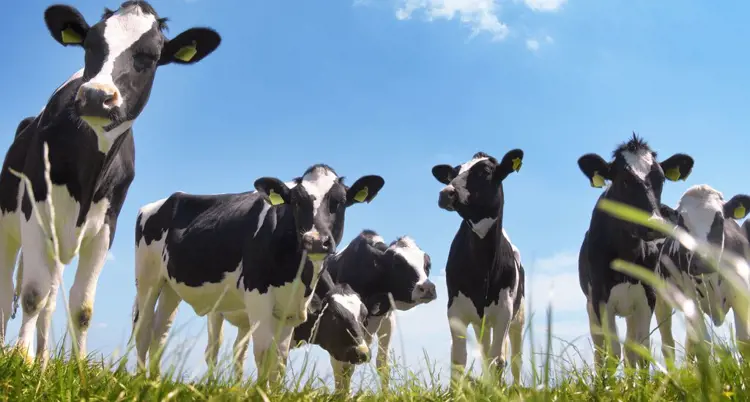How winter impacts a dairy cow
Milk production can be influenced by many different factors, varying from nutrition to breed selection to health. Yet, even within the most highly managed herds, some factors decrease milk production which cannot be avoided. Most of these are environmental and influence the physiology of the dairy cow. The key to good seasonal management is to allow these factors to positively impact the cow and to reduce the negative influence as much as possible by making intentional choices regarding winter management.

Like many other animals, dairy cows are animals that are sensitive to photoperiods. This means that the length of daylight, on any given day, has a direct impact on the cow and not only on the quality of pasture that they are consuming. They are also sensitive to changes in temperature, which occur naturally as seasons change. In combination, these two environmental factors can have a varying daily impact on a herd.
In dairy cows the transition of seasons to winter will affect:
- Dry Matter Intake – the amount of dry matter that the cow consumes.
- Milk Production – the quantity of litres produced by the cow.
- Fertility – the likelihood of conception and the length of time in between calvings.
With day length shortening in winter, as well as temperature dropping, the above factors are important to take into consideration when planning around seasonal changes.
Cows in milk
Exposure to a longer photoperiod typically results in increased dry matter consumption among cows in milk. This is to meet the demands caused by increased milk production. Contrary to popular belief, it is not dry matter intake that increases milk production in a longer photoperiod, but the decreased melatonin produced as a side effect of longer exposure to light. Melatonin regulates the internal clock of a dairy cow.
A longer physiological ‘day’ causes the cow to secrete more hormones related to milk production, which increases milk quantity. As the days are shorter in winter cows are exposed to less light, which reduces the length of their internal clock, and they produce less milk. This may not be a benefit in early lactation but does have its place with regards to drying off.
Even though milk production is negatively affected by the winter season, it does have a positive influence on fertility. At lower temperatures, cows have an easier time re-conceiving, as they are not under heat stress. Heat stress can reduce the prevalence of estrus symptoms - resulting in lower estrus detection rates - as well as compromising hormone status and blood flow, which also reduces the chance of conception. It has also been shown that ovulation rates are increased during shorter photoperiods as well.
Dry cows
The impact of temperature and photoperiods on dry cows differs from that on cows in milk. Some studies show that shorter photoperiods allow for greater recovery of the mammary tissue in the dry period. This may be due to shorter daylengths which decrease prolactin secretion. Prolactin is a hormone that helps induce milk production. By suppressing this hormone, milk production is halted, and mammary involution occurs. There is some evidence that suggests this leads to increased milk production over the early stage in the next lactation because the mammary tissue has been given time to fully recuperate. Regardless of the exact cause, it has been proven that shorter photoperiods in the dry period help with greater milk volumes in the next lactation.

Another factor that influences during the dry period is heat stress. Heat stress increases prolactin concentration. Again, prolactin is a hormone that stimulates milk production. During winter the effects of heat stress are not present, therefore prolactin secretion is decreased more quickly than during a typical dry-off period. This allows the cow to complete mammary involution sooner and allows for better recovery of the mammary tissues, as with the shortened photoperiods.
How winter impacts the farmer
Environmental factors are among the greatest challenges farmers face. Deciding how best to use those factors to the farmer’s advantage is important. Generally speaking, autumn calving is more popular than spring calving for seasonal farms. Looking back at the effects of winter on a dairy cow this makes sense. Cows that calf down in autumn have a lower demand for dry matter intake as production is lower, reducing the stress on the need for sufficient feed. Re-conception rates are also higher during winter, which is when a cow would be AI’d had it calved down in autumn. Yet, there is also an argument for spring calving, as winter seems to be the best season for drying off. Ultimately, each farmer should look at his entire production system to decide how best he can use the influence of winter to positively impact his herd.
Contact your local De Heus technical advisor to help identify how winter impacts the dairy cow - https:// www.deheus.co.za/meet-our-team/.
